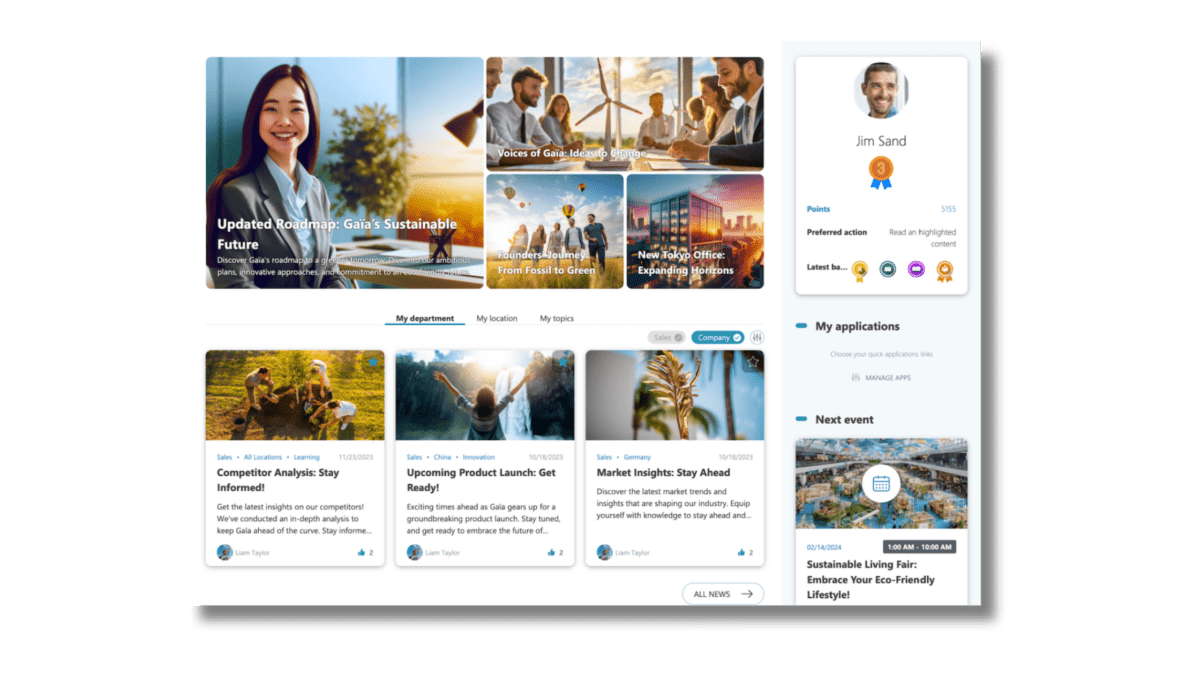Early Successes and Challenges
Workplace was designed to meet the specific needs of large companies, particularly those with many frontline employees. It promised to centralize communication, file sharing, collaboration, and task management on a single, intuitive platform accessible from any device. Early adoption by major retail players like Walmart and Carrefour suggested great potential. The platform’s ease of use, inspired by mainstream social networks, and its integration with existing internal communication tools were significant advantages.
However, Workplace struggled with data, security, and privacy issues. Companies, especially in Europe, were hesitant to entrust sensitive data to a platform controlled by Meta, which already had a shaky reputation for privacy. This concern was heightened by Workplace’s reliance on user data collection and analysis to offer personalized features and improve user experience—a common practice in B2C but less acceptable in B2B, where data privacy is paramount.
Comprehensive Approach to Digital Workplaces
Workplace aimed to be an all-in-one solution, integrating online meeting tools, enterprise social networking, and intranet portals. However, this broad approach lacked precision and failed to meet the specific needs of each tool type.
Modern companies need platforms where information is not only centralized but also well-structured. An effective Digital Workplace should provide a single portal where users can easily find the “source of truth” for documents, people, and applications. This means a hub where all relevant information is intuitively and systematically organized.
Centralized Portals for Documents, People, and Applications
Workplace did not succeed in creating a centralized portal that meets the diverse needs of businesses. A successful portal should integrate:
– Documents: Easy access to documents with explicit versioning, metadata for easier search, and well-defined permissions.
– People: A comprehensive employee directory with detailed information about roles, departments, and skills to facilitate better collaboration.
– Applications: Seamless integration with the tools and applications used by the company, offering a consistent and uninterrupted user experience.
Powerful Search Tools
Another critical aspect is search functionality. Companies need robust search tools that can handle complex queries and quickly provide relevant results. This includes keyword search, semantic search, and the ability to filter results by various criteria (date, author, document type, etc.). Advanced search capabilities help find documents and uncover relevant information hidden in related content, boosting productivity and efficiency.
Workplace’s attempt to integrate everything without excelling in any particular area diminished its competitive advantage. Specialized solutions like Microsoft Teams for collaboration and Powell Intranet for content management and internal communications demonstrate the importance of a structured and specialized approach to meeting diverse business needs.
User Experience: Balancing Familiarity and Information Optimization
While the social network-inspired interface facilitated some users’ initial adoption of Workplace, it also presented challenges. The platform sometimes replicated the drawbacks of mainstream social networks, with a flood of notifications and irrelevant information for all users. This information overload, combined with a lack of structure and clarity in content organization, led to a perception of disorder and inefficiency among some employees. The intuitiveness and fluidity of personal social networks do not necessarily translate well in a professional context, where information hierarchy and precision are crucial.
Moving Towards a More Nuanced Digital Workplace
The end of Workplace highlights the need for businesses to find robust and secure alternatives for their collaboration and communication needs. Microsoft has established itself as a key player in the B2B domain with solutions like Microsoft Teams for meetings and collaboration, and Microsoft 365 for secure document creation and storage.
Powell Intranet: A Comprehensive Alternative
Powell Intranet positions itself as an excellent alternative by integrating communication and employee engagement strengths. It offers content customization, fine-grained permission management, and seamless integration with Microsoft Teams, addressing the specific needs of each organization. Powell Intranet allows companies to set up communities—the core value proposition of Workplace—while giving them a choice of technology support (Teams, Viva Engage, or Powell community), with a transparent interface for employees integrated into the rest of the intranet.
Powell Intranet strengthens its value proposition with a mobile app for frontline teams and AI-enhanced features for content creation and information search.
The closure of Meta’s Workplace opens new opportunities for companies. By leveraging robust and secure Microsoft solutions and integrating specialized tools like Powell Intranet, companies can not only maintain but improve their digital work environments. With its advanced features and seamless integration with Microsoft tools, Powell Intranet offers a comprehensive and effective alternative for optimized collaboration and enhanced employee engagement.



